Aircraft dr. Lippisha. Tails and not only
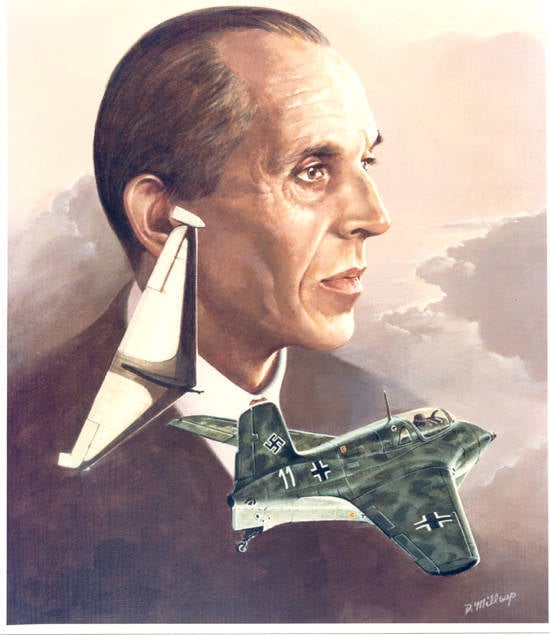
Alexander Lippis was born on November 2, 1894 in Munich (Bavaria). The future designer was not going to connect his life with aviation, but decided to follow his father's footsteps, enrolling in an art school. However, the outbreak of World War I interfered with his plans. Lippis during the military service in 1915-1918 had the opportunity to fly on planes as a cartographer and air photographer.
After the war, Lippisch led collaborations with the company “Luftschiffbau Zeppelin GmbH” (“Luftschiffbau Zeppelin”), who was the leading developer of rigid airships. It was then that Lippish became interested in tailless aircraft. The first device of this type developed by him in 1921 was put into production.
It was Lippisch-Espenlaub E-2, created together with the German aircraft designer and pilot Gottlob Espenlaub. This work was the beginning of research in the field of aerodynamics, subsequently embodied in more than 50 1920-1930-s projects.
Alexander Lippish, being an outstanding scientist and unusually talented designer, never had a large aircraft factory at his disposal to translate his unusual ideas, sketches and projects that were well ahead of his time. Lippish insisted on working with large aviation enterprises, although this led to some difficulties and disagreements. The main problems arose due to the fact that the factories had their own ideas, designs and chief designers, and the work of Lippish was far superior to them.
Only after Lippish moved to Vienna did a factory with a staff of 110 come into his possession. It is true that the designer for the manufacture of bath heaters, which had no business with aircraft before that time, came to the designer’s disposal. The transition to the creation of wooden aircraft was difficult, since almost all the necessary equipment was missing. Immediately, we note that until the end of the war, only a few layouts were built in the factory and the frame of the fuselage of the Delta VI-VI.
After four years of joint work in Augsburg with Messerschmitt AG, which was not only successful, but also connected with envy and, as a result, with intrigues, Lippisch was appointed head of the Aviation Research Institute (LFA) in Vienna. The Institute was subordinate to the LFA of Munich - Ottobrunn.
Lippisch, while working at the Messerschmitt plant, besides Me 163, had a large number of ideas and projects. Sketches of jet fighters of that time, which coincided with the beginning of the war, were considered in detail, as they represented the first attempts to create jet fighters with one engine. At the same time, Lippish anticipated a lot, that only many years later became the property of the world aircraft. By the end of the war, the designer had a great influence even on Messerschmitt projects. It should be noted here that the Entsian unmanned aerial vehicle, P.1111, P.1112 tailless fighters and P.1108 long-range bomber.
In Vienna, Lippish mainly focused on the use of new types of power plants and on new wing shapes. He continued to work on the delta wing, which began in the 1920s. Lippish's research in the field of application of a ramjet engine (ramjet engine) was characterized by the use of solid fuel and a new combustion chamber.
Along with fundamental research, wind tunnel blowing and model testing, there were several projects that could be quickly implemented. Experienced and combat vehicles Lippish wanted to build in cooperation with a large airline, for example, Henschel. Among the projects of that time were Р13а or Р13b, equipped with a ramjet propulsion system, and the Delta VI fighter, equipped with two jet engines and superior to Me 262 in performance.
Project Р01
In January, 1939, Alexander Lippisch and his staff were transferred from the German DFS (Gliding Research Institute) in Darmstadt to Augsburg to the Messerschmitt AG plant. Using the industrial capacity of the enterprise, the designer had to implement the RLM project ordered by an experimental tailless aircraft with a rocket engine. For security reasons, the futuristic aircraft was assigned the RLM 8-163 number, previously provided by the Fieseler Fi-156 "Storch". Naturally, after the start of the war, the ministry ceased to fund "Project X".
Lippish had such a development of events and therefore engaged in the military use of his project, which was more time consuming.
Thus, starting in April 1939, interceptor projects began to appear, which, after successful trials of the experimental DFS 194 and the modern Me 163A, again received support from RLM.
However, Lippish in 1939 did not trust the rocket engine, which had many flaws. In this regard, when creating a combat aircraft, the designer kept open the question of the power plant. He went to this step to avoid closing the project due to the cessation of work on the liquid jet engine. Thus, besides the P01, equipped with a rocket engine, there were projects with turbojet engines. It should be noted that the existing variants of these engines could not be used either. Works differed combination of the power plant with a new aerodynamics. Innovations used in the project should have provided the car with excellent performance.
The P01 was primarily developed as a military version of the experienced Me 163 under the number RLM 8-263. The designation Me 327 was given in 1941. The prototype received the designation Me 163A, and the combat aircraft built on its base received the designation Me 163B (No. RLM 263). In the autumn of 1941, the project Me 327 was closed in favor of Me 163B.
The origin of the experimental Me 163A, which 13 February February 1941, flew in a non-powered version, led to DFS 39. The design of Me 163A Lippisch and his staff developed the 1939 of the year in the spring and summer.
When Lippish received the first, yet uncertain information about a turbofan engines in April 1939, a sketch of a prototype aircraft appeared, having a nasal air intake of a small extension, reminiscent of the Starfighter F-104 fighter.
Based on this experience in the fall of 1939, the first draft of a jet-powered fighter appeared.
Project Р01-111
This project, according to Lippish himself, is an armed version of the aircraft Me 163A. The Junkers jet engine of the MA concept was designated as a power plant. Muller By this time, the carrier planes had already demonstrated in the “L” section the usual sweep, although in comparison with the Me 163, the wing had a lower relative elongation.
Specifications:
Full length - 6600 mm;
Maximum height - 3200 mm;
Wingspan - 7500 mm;
Sweep - 24 degrees;
Wing area - 19,0 m2;
Wing Extension - 2,96;
Empty weight - 2200 kg;
Take-off weight - 4270 kg;
The mass of fuel - 2100;
Unit load - 225 kg / m2;
Armament - 2хMG 151 caliber 15 mm located in the root of the wing.
Project Lippisha Р01-112
Under the designation Р01-112 in January 1940, an enlarged Me 163A was created as an unarmed prototype aircraft, mainly in relation to the fuselage. This model was designed to study the technology of boundary layer control. With the help of blowing the upper surface of the wing consoles near the ailerons with compressed air, the engineers tried to increase the maximum lift force and increase the safety of the flight at low speeds by reducing the stall speed. In this case, in all flight regimes, the effectiveness of the ailerons should have been maintained. Air was drawn from two side air intakes.
As a weapon developed on the basis of this decision, in February 1940, the fighter received four machine guns. A pair of BMW P3304 jet engines were located in the fuselage near each other in such a way that this layout was later often imitated. In this project, Lippishem also used the already practically traditional skis with a retractable crutch. In addition, a retractable auxiliary chassis was additionally provided, which required closer placement in the design of the units. Up to the installation of take-off and landing devices, the concept of the fighter was very modern.
Although the flight characteristics are not known, based on the engine power and circuitry, it can be expected that the maximum speed should have been 1000 km / h.
Specifications:
Length - 7500 mm;
Height - mm 3200;
Wingspan - 8000 mm;
Wing sweep - 32 degrees;
Wing area - 16 m2;
Wing Extension - 4,0;
Powerplant - Weinrich-type 2xBMW 109-002 (Р3304);
Presumably take-off weight was 4000 - 4500 kg
Armament:
2хMG 17 caliber 7,92 mm (placement in air intakes);
2хMG 151 caliber 15 mm (placement under the cockpit in front of the fuselage).
Lippisch, like Messerschmitt, attempted to achieve maximum flight performance with a smaller engine on the plane.
In July, the 1940 of the year, the proposals of fighters, designated after the war by Alexander Lippish as works, appeared according to the "true" concept of the Р01 aircraft. The wing had an improved speed profile, and its contour has changed slightly in relation to the Me 163A wing.
Project Р01-113
The “L” department for the first time investigated the design of an interceptor having a combined power plant for quick climb. This concept of the power plant of its highest, but at the same time the final stage reached in 1957 in English in Saunders Roy SR 53.
The high-position swept wing had Fletner's special wide landing flaps, which had a moment compensation.
Specifications:
Length - 6750 mm;
Height - mm 3000;
Wingspan - 9000 mm;
Wing area - 18 m2;
Sweep - 32 °;
Lengthening - 4,5;
The power plant - BMW TRD class (kg 600 thrust), Р3302 or Р3304; in addition LRE HWK RII - 203 (adjustable thrust 150-750 kg);
Armament - 2хMG 151 15 caliber mm (placed on the right and left of the pilot's seat).
Project Р01-116
After a break lasting a year due to work on Me 163A and DFS 194, Lippis again began work on Р01.
By this time, accurate information about the future TRD were already known. The results of the aerodynamic research institute became available to industry in ever-increasing volume. The project Р01-116 by this time had similarities with Me 163B. The transition to the mid-plan from the Upper Plan was the result of blowing in the wind tunnel.
Specifications:
Length - 7060 mm;
Wingspan - 9000 mm;
Wing area - 18 m2;
Sweep - 27 °;
Lengthening - 4,5;
The power plant - 1хBMW 109-002 (Р3304) (kg 600 thrust);
Armament - 2хMG 17 caliber 7,92 mm (nose of the fuselage): 2хMG 151 caliber 15 mm (bottom of the fuselage on the right and left of the engine intake).
P01-115 Interceptor
In this project, in comparison with Р01-113, jet and rocket engines changed places. The result was a very common and often-shaped air intake shape after the war. The wing, which was already used by Lippish in the previous project, acquired its final shape.
The drawings for this project have not been fully developed. In fact, it was the last sketch in the framework of Р01 using a turbojet engine. Department "L" after the termination of work on this project continued to develop an aircraft with a liquid-propellant rocket engine.
Specifications:
Length - 6750 mm;
Wingspan - 9000 mm;
Wing area - 18 m2;
Lengthening - 4,5;
Sweep - 27 °;
The power plant - 1хBMW 109-002 (Р3304) (kg 600 thrust); 1 x LRE Helmut Walter;
Armament - 2хMG 151 15 caliber mm (located in front of the fuselage bottom).
When in the autumn of 1941, work began on Me 163B, Alexander Lippish used his preliminary work.
In 1943, the designer with the P20 project attempted to re-equip the Me 163 TRD.
Project Lippisha Р09
6 August 1941 of the year on bench tests a special engine Junkers T1 developed traction 765 kg. Thus, the required thrust in 600 kg exceeded effortlessly. Amselm Franz 25 Oct. 1941, at the Junkers OMW plant, completed the first long engine test period. The results were very satisfactory. However, it turned out that the potential of the engine will be unavailable for a long time.
While Messerschmitt worked with the “L” department on Me 262 using the problematic BMW engine, Lippisch presented a fighter project that included the use of promising engines from Dessau from the very beginning.
In developing the project, the experience of designing aircraft Р01 and Me 163 was used.
As far as is known, for the first time in the project it was proposed to install engines in the root part of the planes. In the future, Messerschmitt similar placement of engines has repeatedly used high-speed aircraft with turbojet engines in their designs.
The P09 project was characterized by a short development time, low development risk, low wing load and ease of manufacture. The other side of the coin was RLM's weak interest in development, running parallel to He 280 and Me 262.
Specifications:
Length - 7100 mm;
Height - mm 3200;
Wingspan - 11600 mm;
Wing area - 29,5 m2;
Sweep - 30 °;
Lengthening - 4,56;
Take-off weight - 6000-6500kg;
The power plant - 2 engine Junkers T1 (thrust each 600 kg), placed in the root of the wing;
Armament - 4хMG 151 15 caliber mm.
At this time, along with the work on Me 163B, Lippish begins to pay increased attention to the speed bomber.
Fighter and high-speed bomber Lippish P12
In 1942, Augsburg reached the first information about a jet engine with a thrust of about 3000 kg. The BMW plant planned to create such an engine based on the BMW 028 turboprop engine under development.
The “L” department reacted to this information rather quickly. A sketch appeared on the drawing board, in which a five-meter engine was combined with an appropriately reworked and enlarged glider Me 163B.
Design engineers have investigated the installation of a turbojet engine for options for high-speed bomber and single-seat fighter. Quite interesting in this project is the cockpit canopy, which provided an excellent all-round view to the pilot.
The weak point of the design is the central, fixed ski. In Vienna, Lippish assigned the design number 12 to a small prototype aircraft with a delta wing and equipped with a ramjet engine.
Specifications:
Length - 7000 mm;
Height - mm 3900;
Wingspan - 11000 mm;
Wing area - 29 m2;
Sweep - 26 °;
Lengthening - 4,17;
The power plant - BMW RZOZZ (design thrust 3000 kg);
Armament - 2хMG 151 15 caliber mm (placement in the root of the wing).
Lippish P20
Problems with the rocket engine were the reason that Lippish during the break began to explore an alternative power plant for the successful in the aerodynamic sense of the Me 163B. Me 334 with the DB 605 engine and the converted P20 fighter with a turbojet engine are known. For the last world record holder, chief engineer of the company, engineer German Wurster, was in charge. This fighter project was the last work under the leadership of Lippisha in Messerschmitt. 28 April 1943, the division "L" disbanded. Lippish and most of his staff moved to Vienna. With a great striving forward and with the help of RLM, the P20 would have been created fairly quickly. In addition, at the beginning of 1943, the production of Me 163B began, from which units and parts could be used. Proven aerodynamic design reduced the risk of development work.
However, at the end of 1944, instead, they tried to uselessly catch up with Heinkel He 162. And although in Germany, in the summer of 1942, they were aware of the threat from Allied bombers, in 1943, they still relied on the converted piston fighters and on the expensive Me 262 equipped with two turbojet engines.
High, unfavorable from an aerodynamic point of view, the fuselage provided freedom when choosing an engine. To use the aircraft as an interceptor in May 1943, Würster investigated the installation of Walter's rocket engine on it.
In July, the 1943 of the year P20 and P1092 were used by Messerschmitt in the form of comparative sketches for Me 262. And although the advantage of a single-engine fighter in terms of work and material costs was recognized by an expert engineer Hornung, Me 262 retained its dominant position. The reason for this were the range and carrying capacity of the latter. However, the conditions were constantly changing, and consequently, the opinion was also changing.
That the concept of the P20 aircraft was suitable, after the war, it was proved not only by the British, the experimental aircraft of which Fairy Delta FD1 and Bolton Paul P111 largely corresponded to the Lippish aircraft. The pattern of origin is confirmed by the multitude of tailless single-engine interceptors built to date.
Specifications:
Length - 5730 mm;
Height - mm 3020;
Wing area - 17,3 m2;
Wingspan - 9300 mm;
Sweep - 22 °;
Lengthening - 5,0;
Empty weight - 2589 kg;
Take-off weight - 3627 kg;
The mass of fuel - 750 kg;
Specific wing loading - 205 kg / m2;
The power plant - 1 x Junkers Jumo 004C (kg 1000 thrust);
Practical ceiling - 11600 m;
Rate of climb on the ground - 18,5 m / s;
Maximum speed at an altitude of 6 km - 905 km / h;
Flight duration at an altitude of 11 km - 1,53 hours;
Range at an altitude of 11 km - 940 km;
Armament:
2хМК 103 30 caliber mm (root of the wing);
2хМК 108 caliber 30 mm (front of the fuselage).
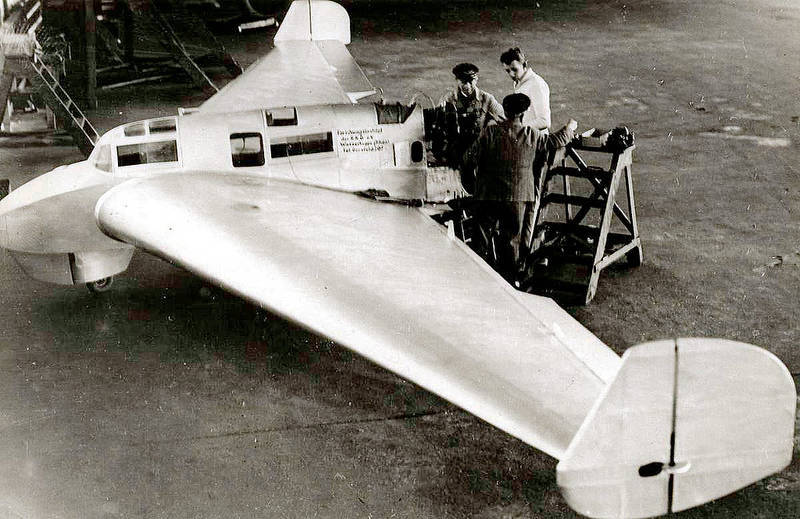
Single fighter Lippish "Delta VI"
At the end of the summer, Alexander Lippish, 1942, took over the development of the high-speed bomber Р11 equipped with two turbojet engines in Augsburg, the bomb load of which should have been 1000 kg. Thus, by May 1943 of the year, when the “turboschnel bomber” had acquired its final shape, many types of aircraft were created, with or without horizontal tail. When those. the department in Berlin accepted the offer of the IX Horten brothers, Alexander Lippish ceased work on Р11.
Lippish in August 1943 of the year received an order from RLM for the development of a “high-speed front-line aircraft” based on this machine. The designer designed a flying triangle with a straight rear edge, and this proposal was further developed under the designation Р11. The power plant remained the same - two engines Junkers Jumo 004.
Until the completion of design work on the non-powered glider, which was the first prototype on the way to a combat aircraft, the project was given the name “Delta VI”. At the same time, the RLM forced the plan, giving the flying triangle a higher degree of priority - “DE”. Aviation Research Institute created models for blowing in the wind tunnel and models, gradually preparing production.
Almost completely redesigned by February 1944, the Delta VI-V2 project served as the prototype aircraft for carrying out tasks as a heavy fighter, fighter-bomber and fighter.
The four copies specified in the order were to be built in Berlin at the Henschel plant. However, these plans did not materialize. After long delays, Lippisch proactively began producing a glider in Vienna at the start of 1945. The skeleton of the fuselage, which was made before the surrender, fell into the hands of Americans. The design of the aircraft was quite interesting. Unlike the Delta VI - VI airframe, which consisted entirely of high-quality plywood, three specimens were of rigid monocoque construction, made in a series as a whole. In both cases, the use of the supporting frame was not provided. The durable carrier shell, formed around the matrix in a simple way, consisted of two layers, perceiving the load from the surface layer. The layers included plastics Tronal and Dinal, developed by Dynamite Nobel. The share of plastics in the design was 50 – 60 percent.
The design, aerodynamic shape and the material used provided the aircraft with good radar stealth characteristics. The power plant consisted of two Yunkers Jumo 004B engines (static thrust of each 900 kg) and four additional solid-fuel RI-503 missiles (calculated thrust of each 1000 kg), which improve take-off characteristics. As on the Horten IX, it was not possible to use other engines without costly reworking the structure.
The low wing load promised a good rate of climb, as well as excellent maneuverability. Based on the experience of developing aircraft with a delta wing, Lippish ruled out the propensity of the aircraft to spin.
Lippish 31 January 1944, expressed the hope that the flight tests of a non-powered glider could begin in April-May, and in July the Delta VI - V2, equipped with two Jumo 004Bs, would fly into the air.
But at the end of 1944, the construction of prototypes was not started, and differences arose between Vienna and the Berlin-based company Henschel.
Specifications:
Length - 7485 mm;
Height - mm 2760;
Wingspan - 10800 mm;
Sweep on the leading edge - 37 °;
Wing area - 50,0 m2;
Lengthening - 2,33;
Glider weight - 2000 kg;
Take-off weight - 7260 kg;
The maximum take-off mass of a fighter-bomber and a heavy fighter is 8000 kg;
Fuel volume - liter 3600;
Specific wing loading - 145 kg / m2;
Maximum speed at altitude 6-8 km - 1040 km / h;
Range at altitude 8-10 km - 3000 km;
Set time 10 km - 15 min;
Armament:
2хМК 103 mm 30 caliber (mounted in the side surfaces);
Additional outboard armament:
2хМК 103 caliber 30 mm or 1хВК 7,5 caliber 75 mm;
Combat load - 1000 kg.
Lippish P15 "Diana"
In early March, 1945, Lieutenant Colonel Siegfried Knemeyer, chief of aviation engineering at the department of technical aircraft structures, visited Vienna. Arriving there from Heinkel, he explained the problems of Not 162 Lippish. He began work and developed his own concept of an aircraft of this type, which was supposed to have higher flight qualities and a smaller mass.
Knemeyer knew what was needed. The current situation required a fighter, which could be assembled from parts available. About the expensive construction of speech could not be. Of the units Me 163B or Me 163C, Ju 248 and Not 162 Lippisch assembled an airplane equipped with a HeS 011 engine, with a maximum speed of 1000 km / h. The fighter (1 scale model: 25 was manufactured at the LFA of Vienna) was urgently required to be launched into a series in Vienna at a new aircraft factory (WNF). Naturally, this question left the end of the war open.
The unfinished project was handed over to the Americans.
Specifications:
Length - 6400 mm;
Wingspan - 10080 mm
Wing area - 20 m2;
Sweep - 23 °;
Lengthening - 5,0;
Take-off weight - 3600 kg (requirement);
Specific wing loading - 180 kg / m2;
The power plant - Heinkel HeS 011 (kg 1300 thrust) or BMW 109-003 (kg 800 thrust);
Flight characteristics (requirement):
Maximum speed - 1000 km / h;
Flight duration - 45 min;
Armament - 2хМК 108 caliber 30 mm or 2хMG 151 caliber 20 mm (installed in the root of the wing).
After the capitulation of Germany, Alexander Lippish was taken to the United States as part of the Paperclip campaign (“Clip”) to advise his experts on the creation of aircraft with a delta wing.
Aerodyne
In 1950-s, the designer switched to the aviation division of the radio company Collins (USA). Here he took up the feasibility study of a VTOL flightless plane (a device with vertical takeoff and landing). His plane Lippish called Aerodyne. Theoretically, the new aircraft was supposed to surpass aircraft with the traditional scheme and reach supersonic speeds. At the same time, there were no technical problems typical for vertical take-off aircraft, such as the Ryan X-13 Vertijet, Lockheed XFV-1 Salmon or Convair XFY-1 Pogo.
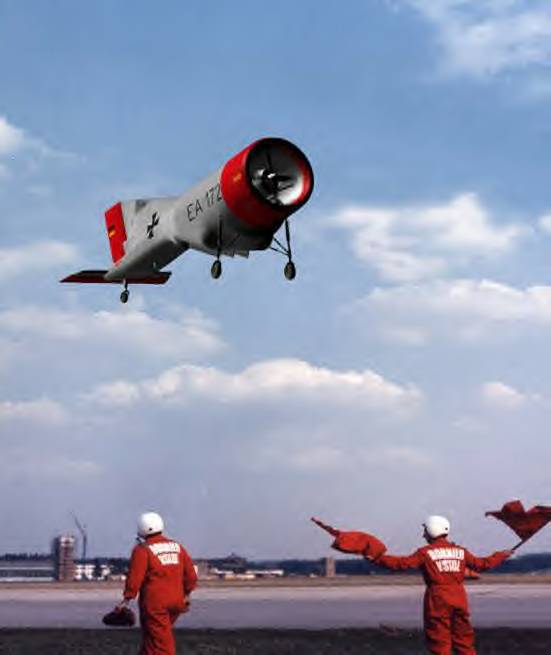
To create lift and pull Aerodin, Lippish used two coaxial propellers in the project. Their air currents moved down through the flaps, providing vertical take-off / landing, and control control was achieved by changing the angle of the adjustable flaps. An unmanned prototype built on the base of the Collins. Take-off potential has been proven in cable tests. After receiving the results of these tests, the management authorized the construction of a full-size apparatus, and Lippisch patented Aerodyne in 1959.
In 1967, the German company Dornier invited a designer to further develop the Aerodyne concept. In 1968-1971, Professor Lippish advised the company's engineers at the design and assembly stages of the device. The new unit was called the Dornier E-1. In the 1972 year, take-off tests were carried out, which were crowned with success. The device showed a soft climb, and when landing - minimal defects.
Despite the fact that the design of Aerodin developed by Lippish proved its viability, the concept was not used for the construction of unmanned or manned vehicles. At the same time, the VTOL Harrier jump-jet inherited a large number of Aerodyne Lippish design principles.
Based on materials:
http://german-ufo.com
http://www.popmech.ru
http://avia.mirtesen.ru
http://www.voenn.claw.ru
http://www.aviationsweb.ru/
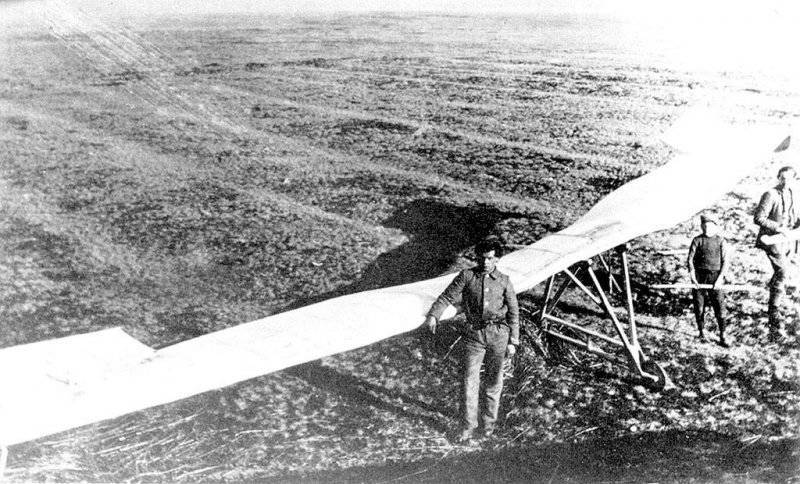
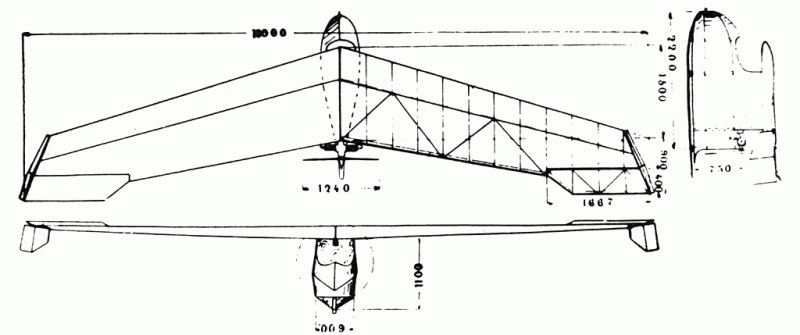
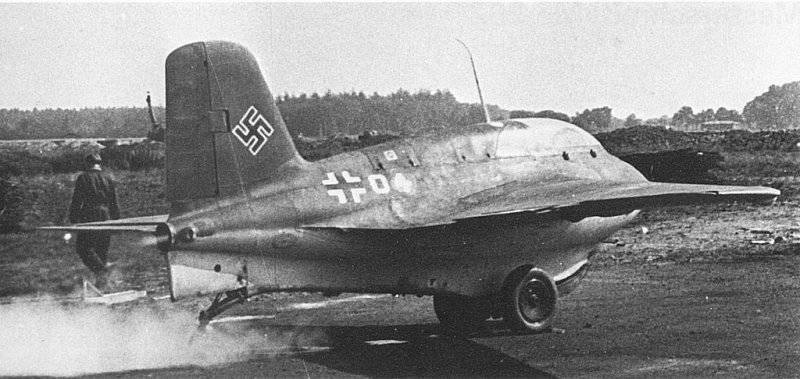
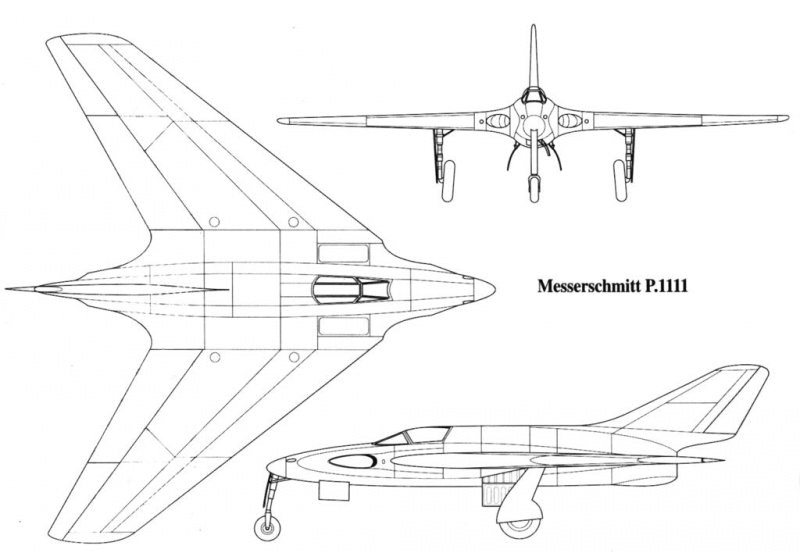
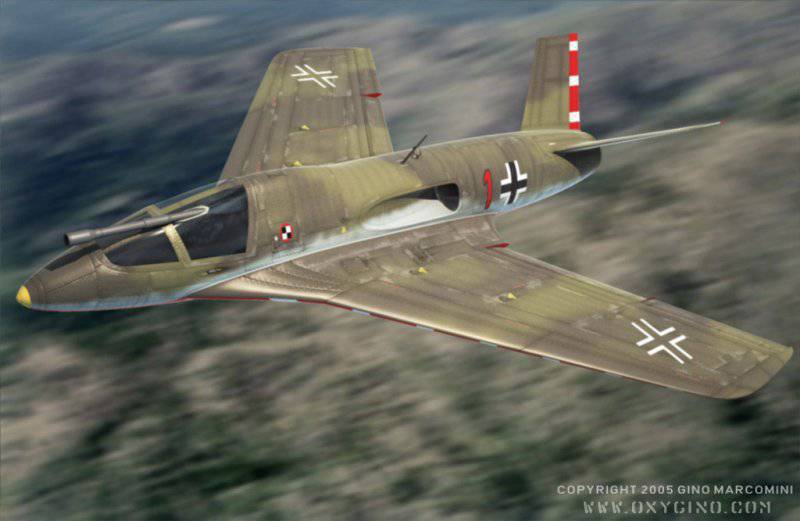
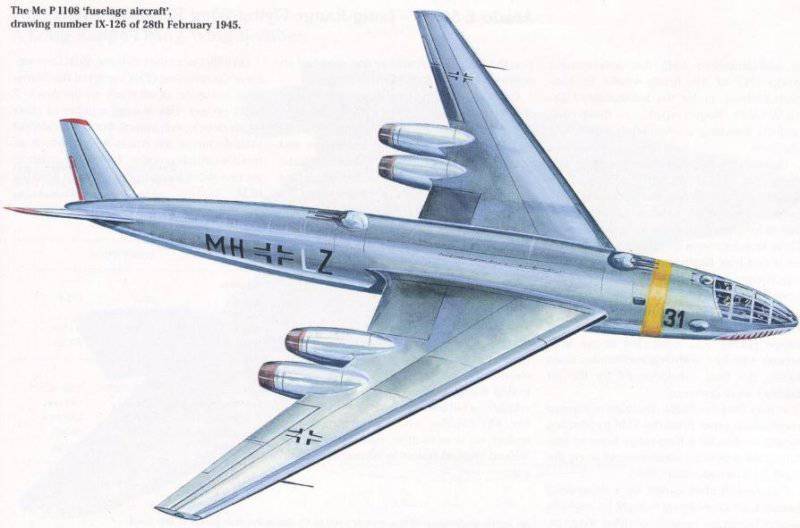
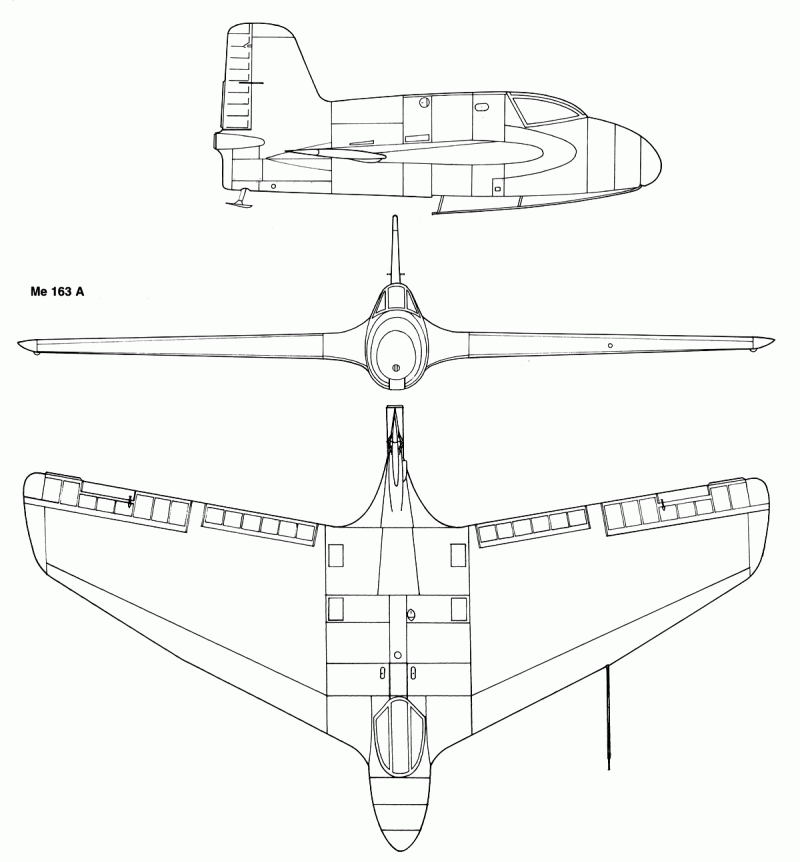
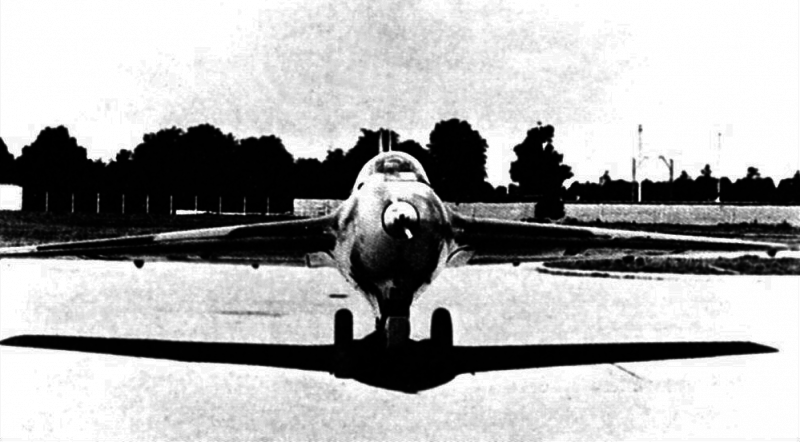
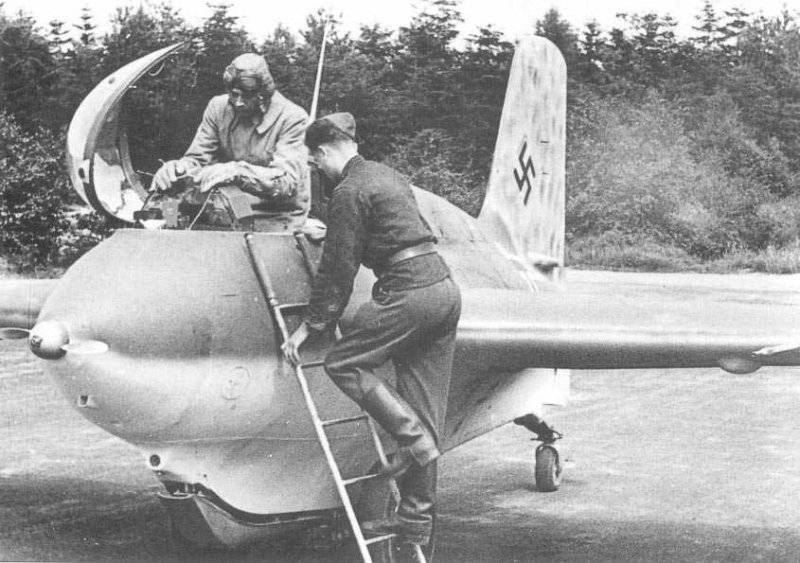
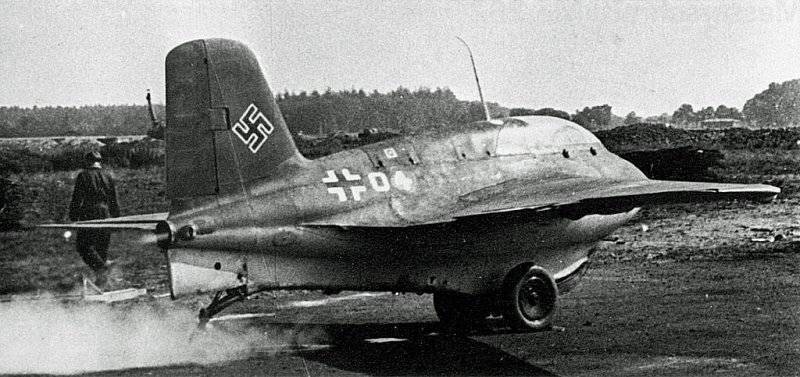
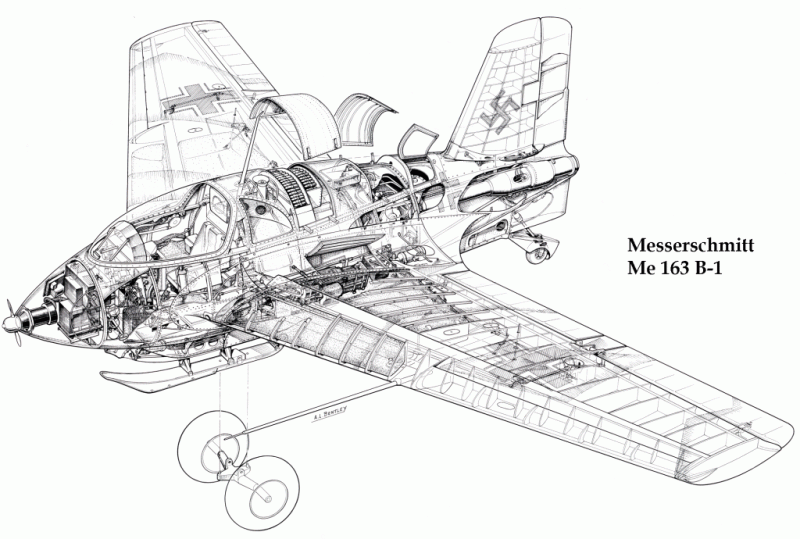
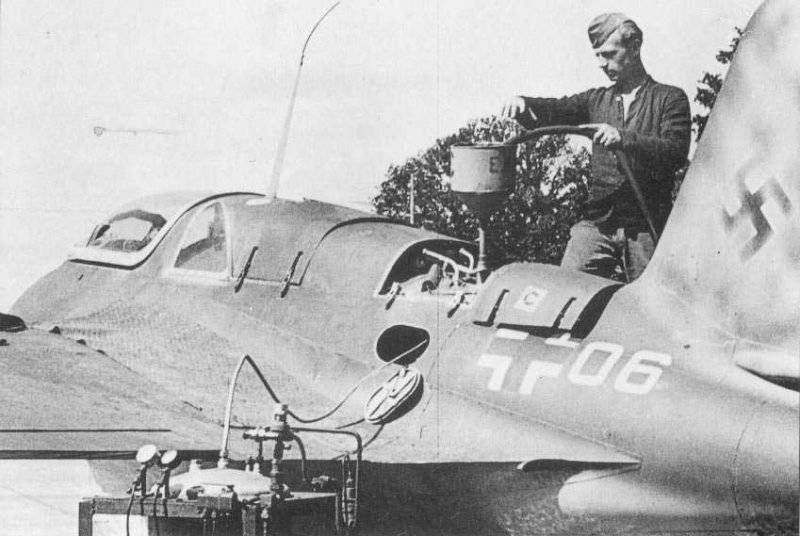
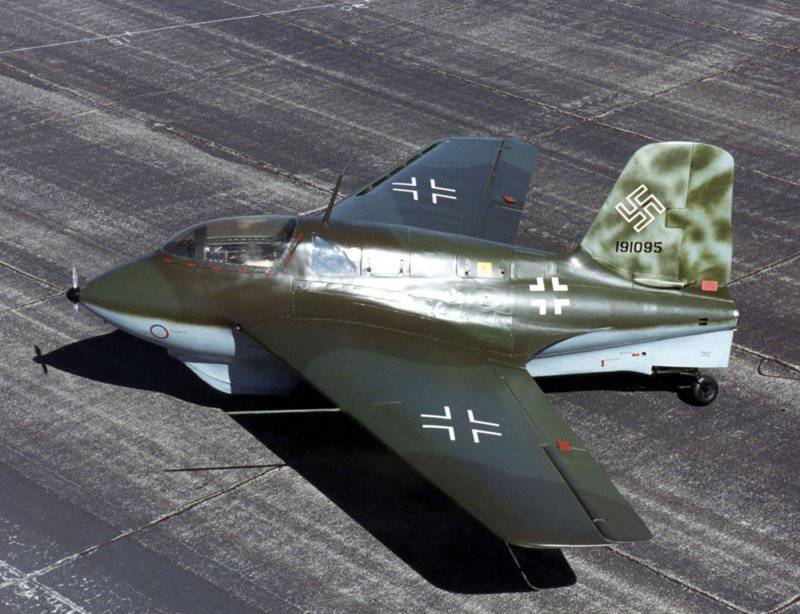
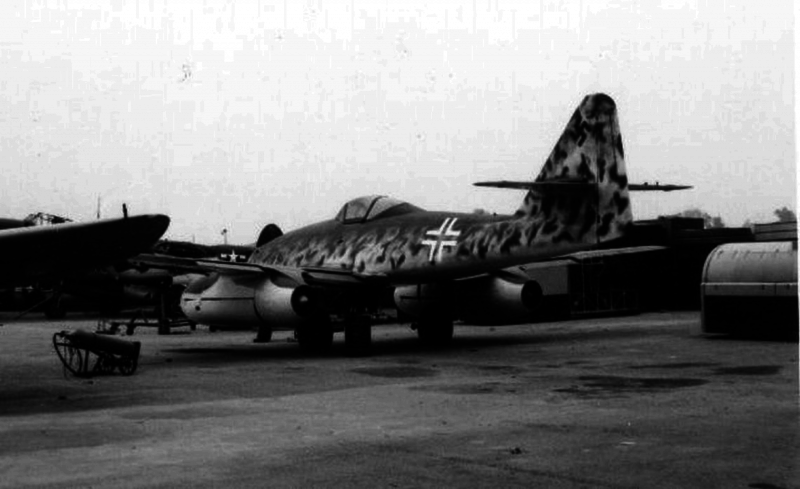
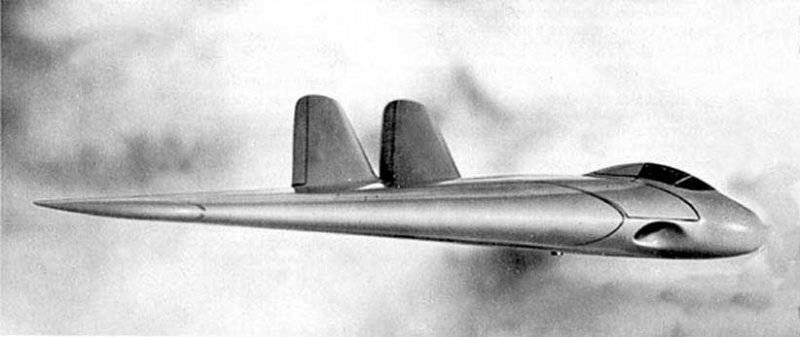
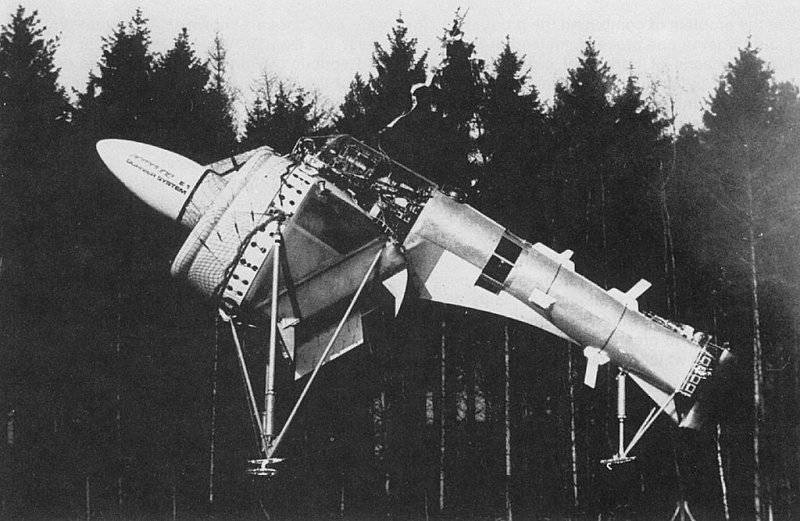
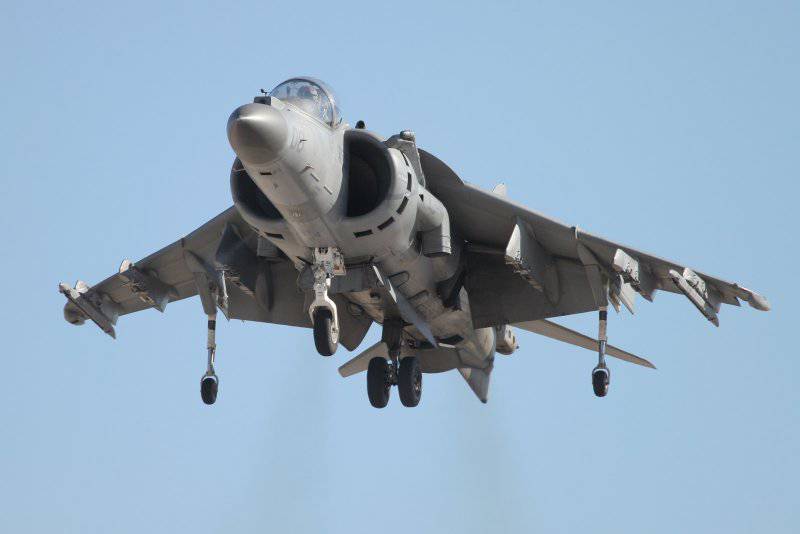
Information